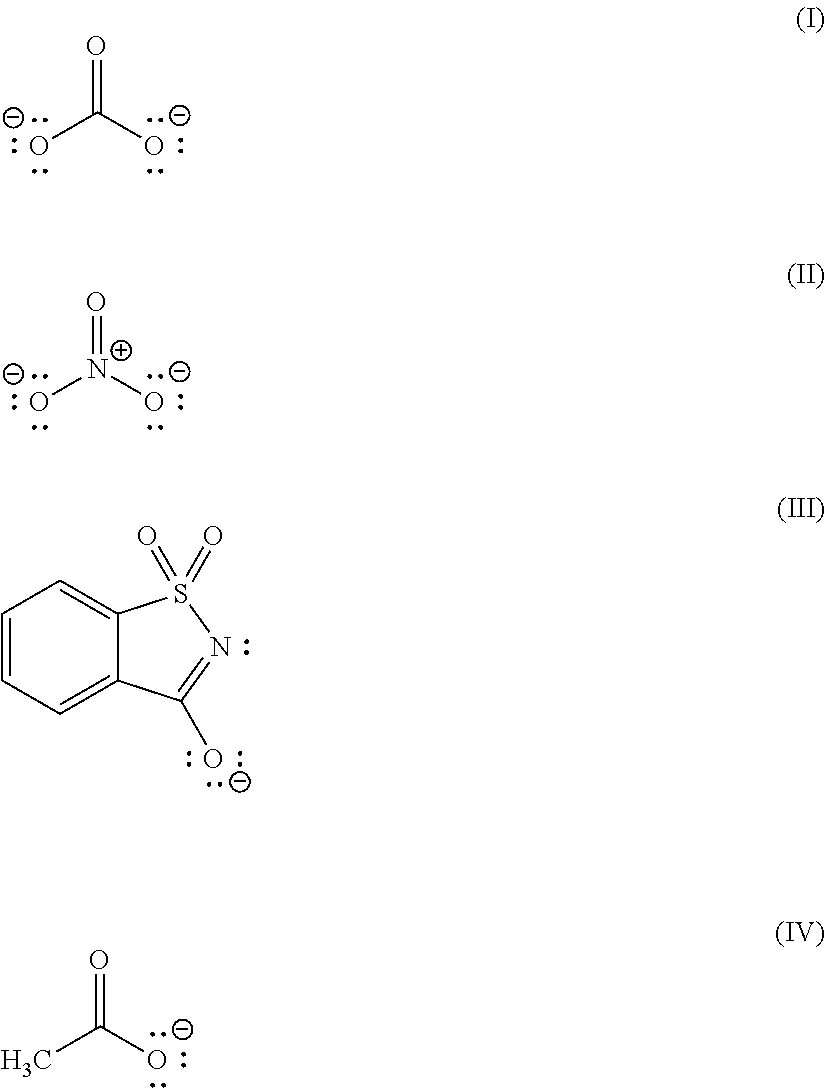Catalysts for the synthesis of oxazolidinone compounds
a technology of oxazolidinone and catalyst, which is applied in the field of catalysts for the synthesis of oxazolidinone compounds, can solve the problems of product colour intensity and product discolouration, and achieve the effects of low colour intensity, high chemoselectivity and high chemoselectivity
- Summary
- Abstract
- Description
- Claims
- Application Information
AI Technical Summary
Benefits of technology
Problems solved by technology
Method used
Image
Examples
example 1
Synthesis of Oxazolidinone 1 from Monoepoxide 1 and Monoisocyanate 1 in the Presence of Catalyst 1 (Bis-Tetraphenylphosphonium Carbonate) at 160° C. in the Absence of a Solvent
[0166]The synthesis was performed following the general procedure 1 at 160° C. in the absence of a solvent, using 64.8 mg (0.0877 mmol, 1 mol % with respect to monoepoxide 1) of bis-tetraphenylphosphonium carbonate (catalyst 1). A pale yellow solid was obtained.
[0167]Colorimetry: 16 HU
[0168]SOXA>99%
[0169]The formation of side products like isocyanurates, carbodiimides and homo-polymers of the epoxides was not observed.
[0170]TOF1 / 2=278 h−1
example 2
Synthesis of Oxazolidinone 1 from Monoepoxide 1 and Monoisocyanate 1 in the Presence of Catalyst 2 (Bis-Tetraphenylphosphonium Nitrate) at 160° C. in the Absence of a Solvent
[0171]The synthesis was performed following the general procedure 1 without a solvent, using 35.3 mg (0.0877 mmol, 1 mol % with respect to monoepoxide 1) of tetraphenylphosphonium nitrate (catalyst 2). A pale yellow solid was obtained.
[0172]Colorimetry: 18 HU
[0173]SOXA=96.7%
[0174]The formation of other side products than isocyanurates, such as carbodiimides and homo-polymers of the epoxides was not observed.
[0175]TOF1 / 2=33 h−1
example 3 (
Comparison)
Synthesis of Oxazolidinone 1 from Monoepoxide 1 and Monoisocyanate 1 in the Presence of Reference Catalyst 1 (Tetraphenylphosphonium Chloride) at 160° C. in the Absence of a Solvent
[0176]The synthesis was performed following the general procedure 1 without a solvent, using 33.1 mg (0.0877 mmol, 1 mol % with respect to monoepoxide 1) of tetraphenylphosphonium chloride (catalyst 3). A yellow solid was obtained.
[0177]Colorimetry: 42 HU
[0178]SOXA=88.8%
[0179]TOF1 / 2=12 h−1
PUM
| Property | Measurement | Unit |
|---|---|---|
| temperature | aaaaa | aaaaa |
| temperature | aaaaa | aaaaa |
| angle | aaaaa | aaaaa |
Abstract
Description
Claims
Application Information
 Login to View More
Login to View More - R&D
- Intellectual Property
- Life Sciences
- Materials
- Tech Scout
- Unparalleled Data Quality
- Higher Quality Content
- 60% Fewer Hallucinations
Browse by: Latest US Patents, China's latest patents, Technical Efficacy Thesaurus, Application Domain, Technology Topic, Popular Technical Reports.
© 2025 PatSnap. All rights reserved.Legal|Privacy policy|Modern Slavery Act Transparency Statement|Sitemap|About US| Contact US: help@patsnap.com



